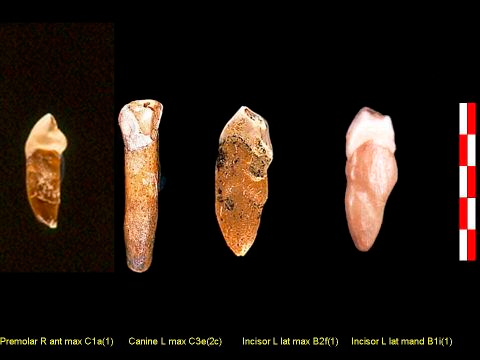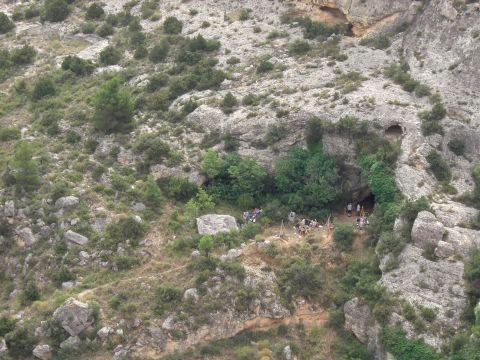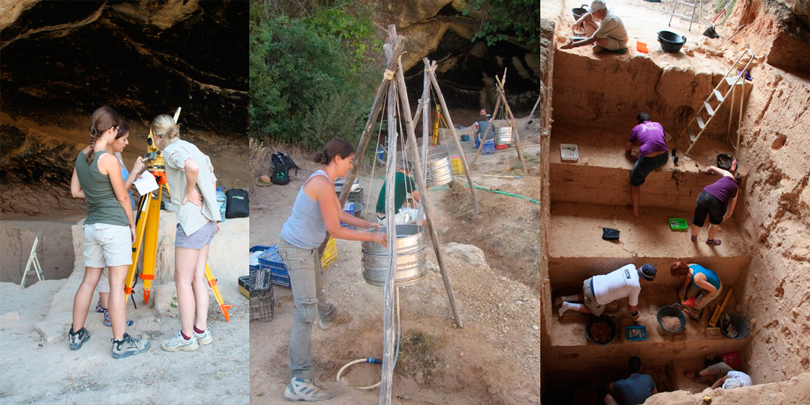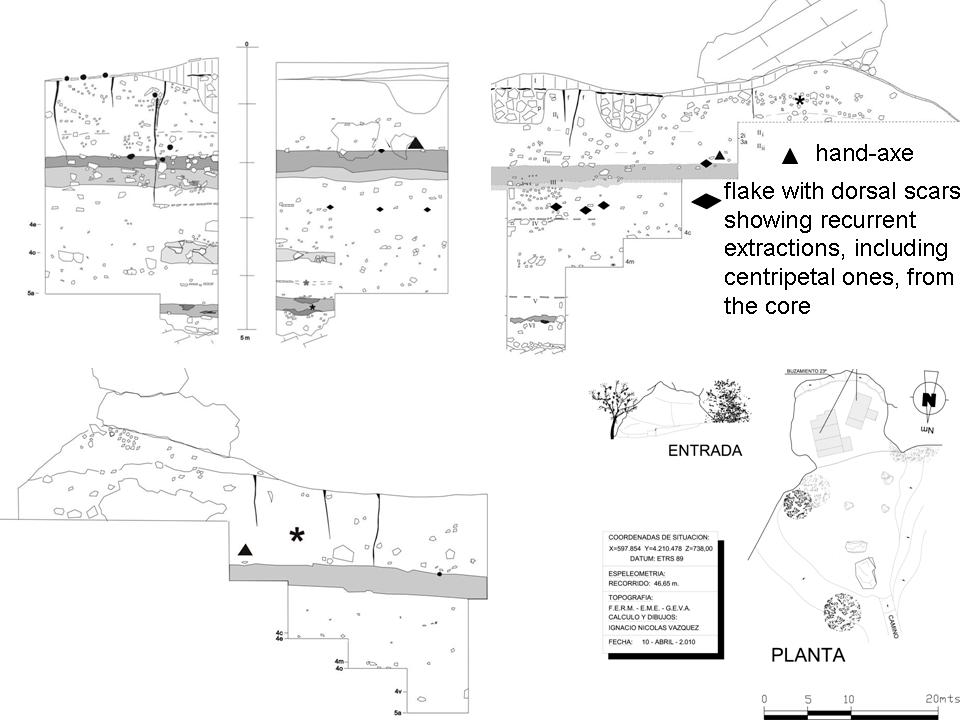The story of our field research at Cueva Negra
How we began at Cueva Negra
Although cursory archaeological exploration of CUEVA NEGRA had briefly taken place during a few days in1981, it was not until 1990 that systematic fieldwork began at the site with Murcia University undergraduate students and young graduates directed by its Professor of Physical Anthropology Michael Walker, photographed here in 1990 at CUEVA NEGRA:
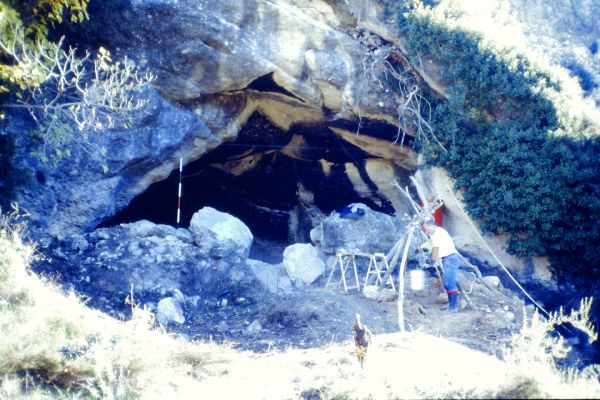
CN 1990
We had to break up enormous rocks that had fallen from the roof at the cave mouth, establish the coordinates for a grid over the area to be excavated, and set up a system to wash excavated sediment over nests of 3 stainless-steel geological sieves each (decreasing in mesh-size from above downwards) in order to retrieve remains as small as 2 mm across with minimal damage to them, which involved pumping water uphill from the river below into a large red oil drum from which a hosepipe allowed water to be played over the sieves (see photo above). Below is a plan of the rock-shelter showing the grid of large 3-metre squares each containing nine 1-metre squares that guides our excavation:
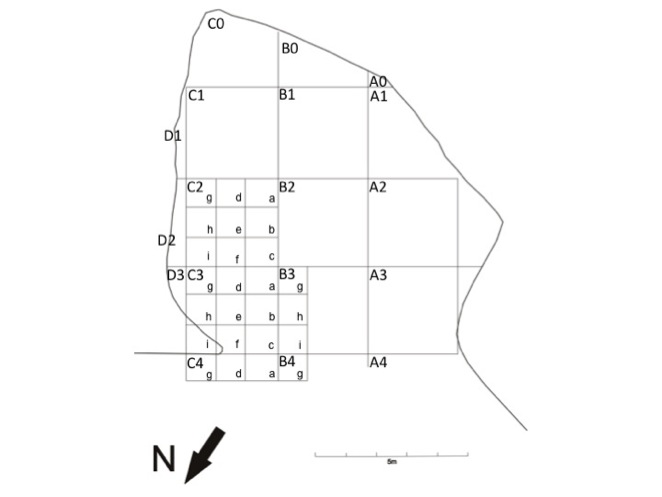
CN grid
Fossil human teeth at Cueva Negra
In 1991 a fossil human tooth was found at CUEVA NEGRA and it was to be followed by five more. They differ from modern teeth in important anatomical respects but are quite like Neanderthal teeth. Because Cueva Negra is older than 0.78 Ma (late Early Pleistocene) it seems appropriate to regard the teeth as belonging to the fossil human species Homo heidelbergensis that later on, in Middle Pleistocene times, gave rise to Homo neanderthalensis in Europe. Four of the fossil human teeth from Cueva Negra are pictured here. They show considerable wear (attrition) of the crowns, some of which are so worn down that the root canal is exposed (which must have been painful). Between crown and root, the necks of the front teeth, viewed from the side, are broad and have large antero-posterior (vestibulo-lingual) measurements, as in Neanderthals, whereas modern human front teeth viewed from the side have narrow necks separating crown from root.
How the Cueva Negra excavation developed
Once the entrance had been cleared of massive fallen boulders we gained access to a wide area of sediment and daylight banished the former gloom. We developed an open-area excavation, downwards and inwards in the step-wise fashion that is widely practised in the relatively restricted area available in rock-shelters, in order to facilitate access by excavators and take maximum advantage of available daylight. We increased the number of nests of sieves at the cave mouth for washing the excavated sediment. Over time we replaced the traditional overhead wire grid with laser levels and eventually a total surveying station with GPS referencing, as these became available.

